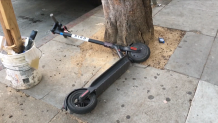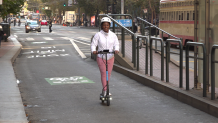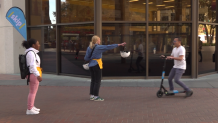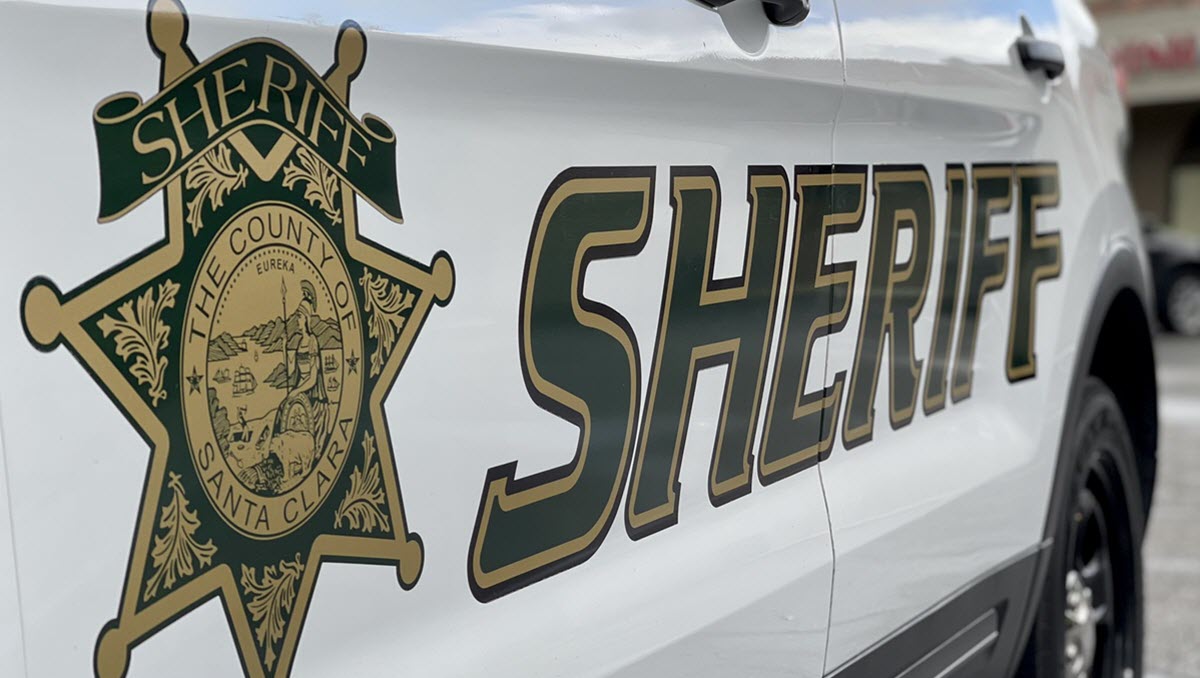What to Know
- San Francisco banned scooter sharing networks in June after three of them launched without permission
- The city got thousands of complaints about scooters littering the streets and sidewalks
- City leaders believe scooters could reduce traffic congestion if done right, so they're doing a limited trial
One day in March, they just showed up: Thousands of electric kick scooters, scattered about San Francisco's downtown sidewalks, with labels proclaiming, "$1 to start!"
To some, it was the latest step in a transportation revolution. To others, it was merely a new form of high-tech blight on the city's crowded streets.
"We certainly saw a lot of people enjoying themselves on the scooters, but we also saw a lot of problems around safety and blocking sidewalks," said SFMTA Sustainable Streets Director Tom Maguire.

A law banning scooter networks without a city permit took effect in June, and faced with tens of thousands of dollars in fines, the three scooter companies — Bird, Lime and Spin — packed up their scooters and left.
The city wasn't done with scooters, though.
Local
"We see a quiet, small vehicle like this as something that can really help us solve the problem of traffic congestion in the city," Maguire said.
Bird, Lime and Spin were among the 12 applicants for a limited pilot program to bring scooters back to San Francisco — but they weren't awarded permits. Instead, the SFMTA gave them to Scoot — which already operates a network of larger electric motor scooters in the city — and Skip, also based in San Francisco, which runs a network of kick scooters it designed in-house in Portland and Washington, D.C.

The city received applications from Bird, HOPR, Jump, Lime, Lyft, OFO, Razor, Ridecell, Scoot, Skip, Spin and UScooters. Their applications, now part of the public record, are posted on the SFMTA website.
Maguire said the two winning proposals satisfied the city's request to solve safety concerns for both pedestrians and riders — offering free helmets and detailed parking instructions, and warning users not to ride on the sidewalks.
Though their scooters look similar, the two companies take very different approaches to managing their fleets. Scoot chose a scooter with a removable battery, and plans to let the vehicles ebb and flow about the city organically — merely sending staff out to swap batteries and repark them when necessary.

"We don't have to employ trucks every night to pick up every single scooter and bring them back, and then throw them in trucks every morning and put them back on the sidewalk," said Bob Walsh, Scoot's San Francisco general manager.
Skip built a scooter with a larger, fixed battery — a range of 20 miles, the company claims — and plans to have ordinary users called "rangers" take home scooters to charge them at night in exchange for a $5-per-scooter reward. Skip is also relying on users to ensure safe parking: the Skip app requires you to take a picture of your properly-parked scooter at the end of the ride.
"Riders who consistently park incorrectly can be penalized, and riders who park really well can be rewarded," said Skip CEO Sanjay Dastoor.

For the pilot program, each company is allowed 625 scooters on the streets, with the possibility of another 625 in six months if all goes well. Both companies will serve the downtown, Tenderloin and Bayview districts in their initial rollout. Scoot will cover some additional densely-packed areas to the south including parts of the Dogpatch and Mission districts. Skip has opted to extend its coverage map to the north, including some of the city's hilliest neighborhoods and parts of Golden Gate Park.
Watch the video above to learn the rules of the road and find out how to ride!



